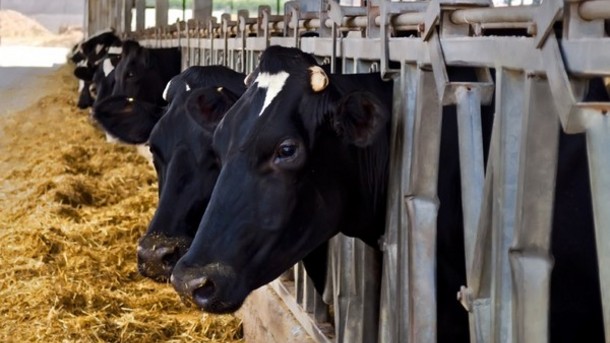Inflammation in transition cows is a fact in the life of any dairy cow that her immunity levels are depressed at calving. To counter that, she might have an inflammatory response to a disease challenge.
But that inflammatory response is a double-edged sword, particularly if it becomes acute, says Barry Bradford, a specialist in dairy nutrition, metabolism and endocrinology at Kansas State University.
Acute inflammation is linked with ramped up neutrophil (white blood cell) activity and function to fight off disease. But it’s also linked to less milk production, poor fertility and greater risk of cows leaving the herd, he says. In some studies, cows with high levels of inflammation produced 20% less milk.
The key to preventing acute inflammation goes back to sound transition cow management. Plus, there is research on new tools that can aid in lowering the risk of acute inflammation, Bradford says.
He recommends the following five steps:
1. Manage body condition score
“Managing body condition is the best proven way to minimize the risk of transition cow disorders,” Bradford says. It’s critical to consider the percent of dry cows outside the acceptable range of body condition score (BCS). All herds will have some cows with BCS greater than 3.5. But if the average BCS is 3.0 and one third are greater than 3.5, there’s a problem, he says.
2. Transition cow housing
Adequate stalls and bunk space in pens that are not over-stocked will ensure dry cows have access to lying space and feed. If pens are overstocked, submissive cows will have less access to both and are susceptible to more problems at calving. Also ensure dry cows are cooled during periods of heat stress to prevent excess standing, lameness and feed intake issues.
3. Antioxidants
Consider using antioxidants, such as Vitamin E, selenium or non-nutritive antioxidants, during the transition period to combat oxidative stress. In one study where cows were given three treatments of Vitamin E before calving, the treated cows had fewer retained placentas and stillbirths than untreated cows.
4. Anionic diets
Anionic dry cow diets have been proven to lower cases of milk fever. “Farms that do not suffer from milk fever should not be complacent,” Bradford says. “The calcium threshold for negative responses to hypocalcemia has been raised by recent powerful studies (8.6 mg/dL).”
5. Tweaking immunity/inflammation
The use of nonsteroidal anti-inflammatory drugs (NSAIDs), such as sodium salicylate, has proven beneficial in cows in their third or later lactation. These older cows responded with 21% more milk and 30% more milk fat than untreated controls. A trial with another NSAID, meloxicam, responded with 10% more milk over the lactation and greater survival rates. The downside: The use of NSAIDs to treat non-specific postcalving inflammation is currently not FDA approved.
Another option is to feed plant-based polyphenols. One study, feeding a supplement containing green tea and curcuma extract during the close-up period through nine weeks in milk, reported a 10-lb. increase in milk production during weeks four through eight of lactation. Another option is to supplement transition diets with flaxseed or commercial products that supply omega-3 polyunsaturated fatty acids, or yeast products designed to boost immunity.
Read More On Horse And Camel Veterinary Supplies
Coopers Piliguard Pinkeye Vaccine


